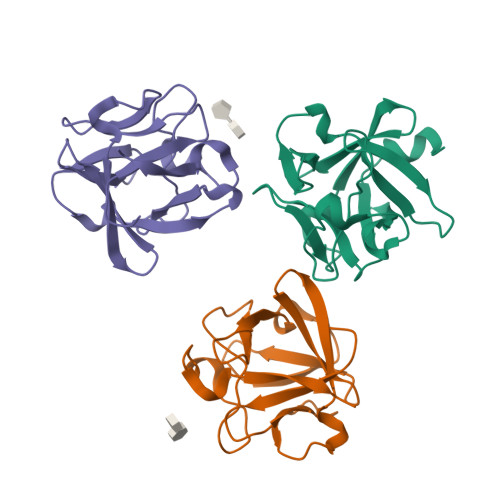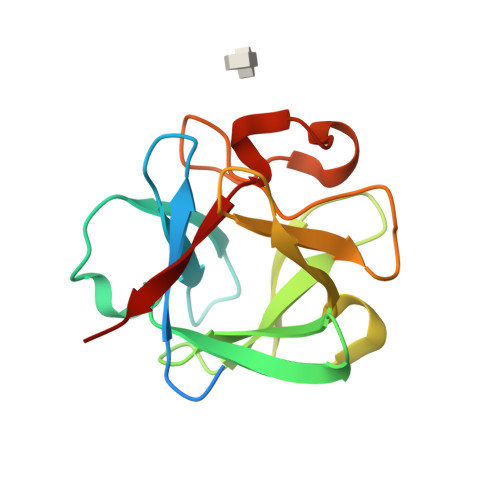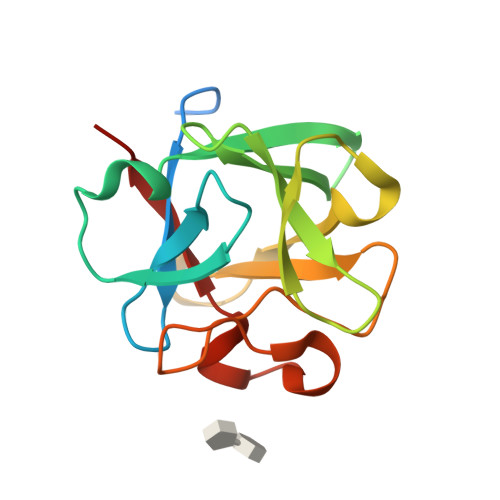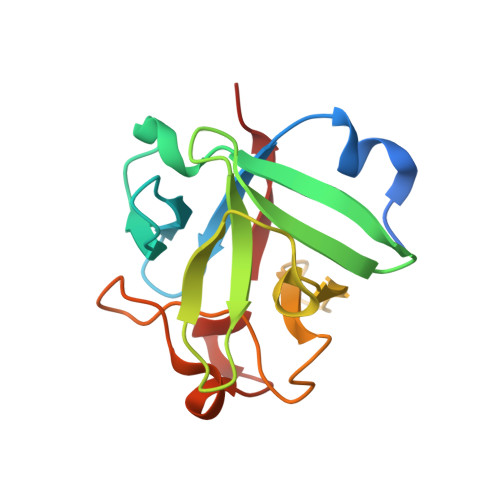Structural and biochemical investigation into stable FGF2 mutants with novel mutation sites and hydrophobic replacements for surface-exposed cysteines.
An, Y.J., Jung, Y.E., Lee, K.W., Kaushal, P., Ko, I.Y., Shin, S.M., Ji, S., Yu, W., Lee, C., Lee, W.K., Cha, K., Lee, J.H., Cha, S.S., Yim, H.S.(2024) PLoS One 19: e0307499-e0307499
- PubMed: 39236042
- DOI: https://doi.org/10.1371/journal.pone.0307499
- Primary Citation of Related Structures:
8HU7, 8HUE - PubMed Abstract:
Fibroblast growth factor 2 (FGF2) is an attractive biomaterial for pharmaceuticals and functional cosmetics. To improve the thermo-stability of FGF2, we designed two mutants harboring four-point mutations: FGF2-M1 (D28E/C78L/C96I/S137P) and FGF2-M2 (D28E/C78I/C96I/S137P) through bioinformatics, molecular thermodynamics, and molecular modeling. The D28E mutation reduced fragmentation of the FGF2 wild type during preparation, and the substitution of a whale-specific amino acid, S137P, enhanced the thermal stability of FGF2. Surface-exposed cysteines that participate in oligomerization through intermolecular disulfide bond formation were substituted with hydrophobic residues (C78L/C78I and C96I) using the in silico method. High-resolution crystal structures revealed at the atomic level that the introduction of mutations stabilizes each local region by forming more favorable interactions with neighboring residues. In particular, P137 forms CH-π interactions with the side chain indole ring of W123, which seems to stabilize a β-hairpin structure, containing a heparin-binding site of FGF2. Compared to the wild type, both FGF2-M1 and FGF2-M2 maintained greater solubility after a week at 45 °C, with their Tm values rising by ~ 5 °C. Furthermore, the duration for FGF2-M1 and FGF2-M2 to reach 50% residual activity at 45 °C extended to 8.8- and 8.2-fold longer, respectively, than that of the wild type. Interestingly, the hydrophobic substitution of surface-exposed cysteine in both FGF2 mutants makes them more resistant to proteolytic cleavage by trypsin, subtilisin, proteinase K, and actinase than the wild type and the Cys → Ser substitution. The hydrophobic replacements can influence protease resistance as well as oligomerization and thermal stability. It is notable that hydrophobic substitutions of surface-exposed cysteines, as well as D28E and S137P of the FGF2 mutants, were designed through various approaches with structural implications. Therefore, the engineering strategies and structural insights adopted in this study could be applied to improve the stability of other proteins.
Organizational Affiliation:
Marine Biotechnology & Bioresource Research Department, Korea Institute of Ocean Science and Technology, Busan, Republic of Korea.




















